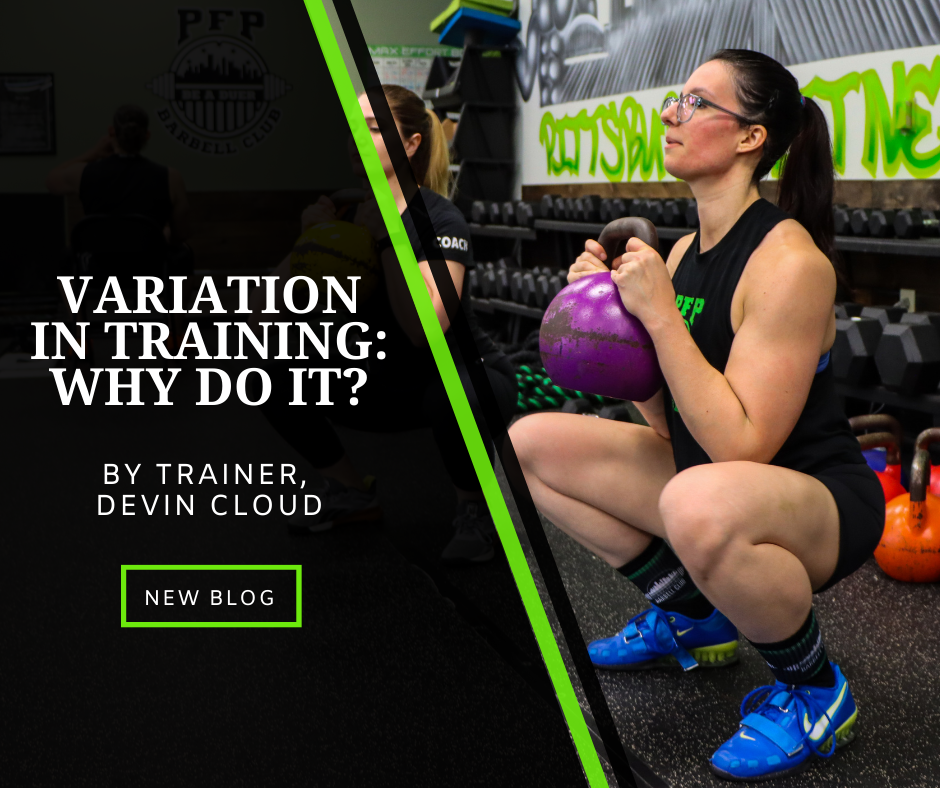VARIATION IN TRAINING: WHY DO IT?
One of the main reasons people start training/exercising is because it can be fun and challenging. There comes a certain point when you do the same things over and over they can become boring and unfulfilling. This usually leads to people dropping exercise altogether or resorting to making changes with no real plan for why. Another phenomenon that occurs is called the law of accommodation. This basically states that our bodies will eventually adjust to the stimulus we enact on it and that in order to see results, we must keep challenging it. Although, how much change is enough?
How to Use Variation Purposefully
Let's say you started a new workout program. This program is as follows:
3x10 squats
3x10 overhead press
3x10 push-ups
3x10 RDLs
3x10 lunges
You perform this workout 3x/week for 2 weeks. Would this eventually get easier and maybe a little boring? Yes. Would it make you stronger? Also, yes. Basic exercises work especially if you are newer to exercise. Our bodies will adjust to whatever stress we put them under, but we are just as sensitive to slight changes in training as we are to start a new program entirely. What this means is that we can make slight adjustments to our training and still see progress.
Take the program from earlier, for example. You can add a couple of reps to each set, making them all 3x12s. Adding a set to each exercise makes it 4x10. Change your rest from 2 minutes to 1 minute. All of these will challenge your body in a different way and still allow you to progress. Maybe this is not enough change for you, and you want a more noticeable change. Take away one exercise first and add one new one to the mix. Another option is to add something fun and engaging, like a game for a warm-up. Go shoot a basketball for a little while or juggle a soccer ball. These are fun ways to switch up your workout while still getting consistent work in.
This can be done with any form of training. Sprint training, cardio, plyometrics, etc., can all be adjusted in this manner with measurable changes over time. Changing these aspects slightly can improve things like speed, strength, work capacity, and tissue characteristics.
Variation to Cause-Specific Change and Transfer of Skills
Say you are an athlete getting ready for your in-season work. You’ve spent time in the off-season getting bigger and stronger. It is time to use those qualities to prepare for performing your sport. One way of doing this is slightly transitioning your training from very high-volume lifts for strength to lower reps while moving the weight on the bar very quickly. This will translate to increased speed and power on the field or court. The same can be done with sprint and plyometric training. Each of these will trend more toward sport-specific actions. Jumps and sprints will be in less volume, but the intent is more maximal and more complex. Utilizing longer rest than earlier in your program will translate to higher-quality repetitions with each set you perform.
However you choose to vary your training, do so with intent and purpose. Whether that purpose is to get better at a skill or just to keep your training challenging and fun, make it measurable and attainable. If you’re looking for more help in your variation training, book your assessment with one of our incredible trainers today!

